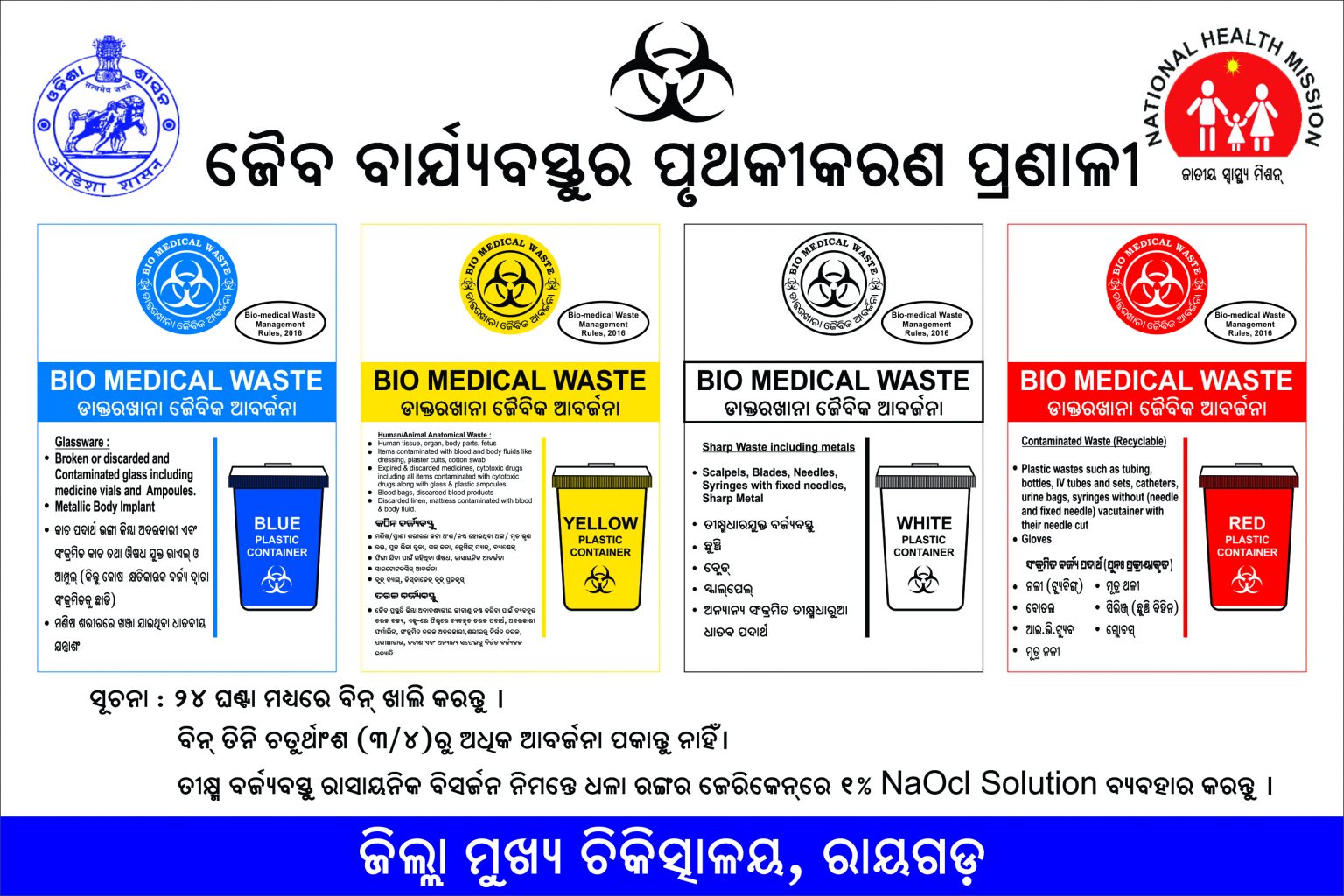Background:
Biomedical Waste Management is an integral part of public health service delivery system and environmental health. The ministry of Environment and forest (MOE&F), GOI,, NOTIFIED BY Biomedical Waste (Management & Handling) Rules, 1998 under Environment Protection Act, 1986 through gazette Notification S.O.630(E).
GOI notified the new rules for Biomedical Waste Management on 28th March 2016. The said rule emphasizes on management of Biomedical Wastes generated from all the healthcare facilities that include segregation collection, transportation, processing, storage, handling, treatment and disposal. Proper management of the generated Biomedical Waste will thus prevent further environmental pollution and public health hazard.
Biomedical waste/hospital waste is any kind of waste containing infectious (or potentially infectious) materials. It may also include waste associated with the generation of biomedical waste that visually appears to be of medical or laboratory origin (e.g., packaging, unused bandages, infusion kits, etc.), as well research laboratory waste containing biomolecules or organisms that are mainly restricted from environmental release. As detailed below, discarded sharps are considered biomedical waste whether they are contaminated or not, due to the possibility of being contaminated with blood and their propensity to cause injury when not properly contained and disposed of. Biomedical waste is a type of biowaste.
Biomedical waste may be solid or liquid. Examples of infectious waste include discarded blood, sharps, unwanted microbiological cultures and stocks, identifiable body parts (including those as a result of amputation), other human or animal tissue, used bandages and dressings, discarded gloves, other medical supplies that may have been in contact with blood and body fluids, and laboratory waste that exhibits the characteristics described above. Waste sharps include potentially contaminated used (and unused discarded) needles, scalpels, lancets and other devices capable of penetrating skin.
Biomedical waste is generated from biological and medical sources and activities, such as the diagnosis, prevention, or treatment of diseases. Common generators (or producers) of biomedical waste include hospitals, health clinics, nursing homes, emergency medical services, medical research laboratories, offices of physicians, dentists, and veterinarians, home health care, and morgues or funeral homes. In healthcare facilities (i.e., hospitals, clinics, doctor’s offices, veterinary hospitals and clinical laboratories), waste with these characteristics may alternatively be called medical or clinical waste.
Biomedical waste is distinct from normal trash or general waste, and differs from other types of hazardous waste, such as chemical, radioactive, universal or industrial waste. Medical facilities generate waste hazardous chemicals and radioactive materials. While such wastes are normally not infectious, they require proper disposal. Some wastes are considered multihazardous, such as tissue samples preserved in formalin.
Objective:
1. To prevent public health hazard and environmental pollution by strengthening the quality of Biomedical Waste Management at all the hospital.
2. To prevent occupational health hazard by strengthening the accessibility, availability of logistics and consumables, PPEs, equipments.









